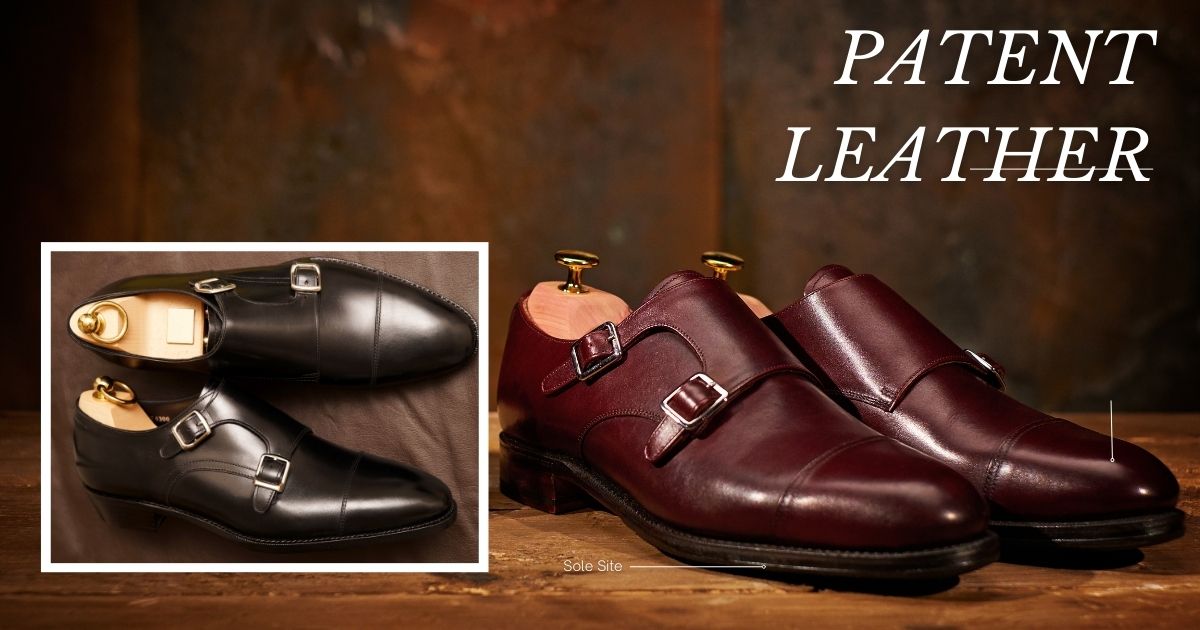Patent leather has long been a staple in the fashion industry, known for its glossy finish and timeless appeal. Whether it’s used in shoes, handbags, or accessories, patent leather exudes sophistication and luxury. But what exactly makes this material so unique? Let’s dive into the world of patent leather, exploring its history, manufacturing process, advantages, and how you can incorporate it into your style.
What Is Patent Leather?
Patent leather is a type of coated leather with a high-gloss finish. This sleek appearance is achieved through a special lacquer or plastic coating, making it distinct from regular leather. The result is a smooth, water-resistant, and durable material that stands out in both casual and formal fashion.
The History of Patent Leather
Patent leather dates back to the early 19th century when it was first introduced in England. However, it gained widespread popularity in 1818 when American inventor Seth Boyden developed a process to create a durable and glossy finish. His technique revolutionized the leather industry, making patent leather a popular choice for footwear and accessories.
How Patent Leather Is Made
The production of patent leather involves several steps to achieve its signature shine. The process includes:
Tanning: The raw leather is treated to remove impurities and enhance durability.
Coating: A synthetic lacquer, often polyurethane, is applied to create a glossy, waterproof surface.
Drying and Polishing: The leather is left to dry and undergoes polishing for a mirror-like finish.
This process not only enhances the aesthetic appeal but also increases the material’s longevity.
Advantages of Patent Leather
Patent leather is favored for many reasons, making it a desirable choice for various fashion and functional uses.
High Shine: Its glossy surface gives off a luxurious and polished look.
Water Resistance: Unlike regular leather, patent leather repels water, making it ideal for wet conditions.
Easy Maintenance: Cleaning patent leather is simple; a damp cloth can remove most dirt and smudges.
Durability: With proper care, patent leather items can last for years without losing their shine.
Common Uses of Patent Leather
Patent leather is widely used in various fashion and design industries. Some of the most common applications include:
Footwear: Patent leather shoes, especially dress shoes and high heels, are a staple in formal fashion.
Handbags and Purses: The shiny finish makes these accessories stand out.
Belts and Wallets: Many luxury brands use patent leather for stylish accessories.
Jackets and Clothing: Some high-fashion designers incorporate patent leather into their collections.
How to Style Patent Leather
Incorporating patent leather into your wardrobe can elevate your fashion game. Here are some tips:
For a Classic Look: Pair patent leather shoes with a formal suit or evening dress.
Casual Chic: A patent leather jacket over a simple outfit adds an edgy touch.
Bold Accessories: Opt for a patent leather handbag to make a statement.
Patent leather is versatile and works well for both minimalistic and extravagant fashion styles.
Caring for Patent Leather
To keep patent leather looking new, follow these care tips:
Avoid Scratches: Store items separately to prevent scuff marks.
Clean Gently: Use a soft cloth and mild soap to wipe away dirt.
Protect from Heat: High temperatures can cause the coating to crack.
Use Conditioner: Special patent leather conditioners help maintain the shine.
Proper care will ensure that your patent leather items stay pristine for years.
Is Patent Leather Real Leather?
Yes, patent leather is real leather that has been coated for a glossy finish. However, synthetic versions exist, made entirely from plastic materials. Always check the label when purchasing to determine whether it’s genuine or synthetic patent leather.
Patent Leather vs. Regular Leather
The primary difference between patent leather and regular leather lies in the finish. Regular leather has a natural texture and requires conditioning, while patent leather has a sleek surface that is easier to maintain. The high-shine effect of patent leather also makes it more suitable for formal occasions.
Environmental Concerns of Patent Leather
While patent leather is stylish and durable, its production involves synthetic coatings that may not be environmentally friendly. Some manufacturers are now adopting eco-friendly alternatives, using water-based coatings instead of traditional chemical lacquers.
How to Fix Scratches on Patent Leather
If your patent leather item gets scratched, you can try these solutions:
Use Petroleum Jelly: Gently rub a small amount on the scratch to blend it.
Apply Nail Polish Remover: A tiny dab can help remove scuffs (test on a hidden area first).
Buff with a Soft Cloth: Lightly buffing can minimize minor marks.
Should You Buy Patent Leather?
If you love stylish, low-maintenance accessories, patent leather is a great investment. It offers a timeless appeal and can instantly elevate any outfit. Whether you choose a sleek pair of shoes or a bold handbag, patent leather items are always in vogue.
Conclusion
Patent leather remains a fashion favorite due to its unique shine, durability, and versatility. From its origins in the 19th century to its modern-day applications, this material continues to be a symbol of elegance. With proper care and styling, patent leather can be a long-lasting and fashionable addition to any wardrobe.
FAQs
Is patent leather waterproof?
Yes, patent leather is water-resistant, but prolonged exposure to moisture can damage the coating.
Can you stretch patent leather shoes?
Yes, but with caution. Using a shoe stretcher or wearing thick socks can help, but excessive stretching may crack the finish.
Does patent leather peel over time?
With proper care, patent leather does not peel easily. However, exposure to heat and rough handling can cause the coating to wear off.
How do you remove scuffs from patent leather?
A soft cloth with mild soap or petroleum jelly can help remove scuffs. For deeper scratches, a bit of nail polish remover may work.
Is patent leather suitable for everyday wear?
While patent leather is durable, it’s best for special occasions or controlled environments where it won’t get heavily scratched.











